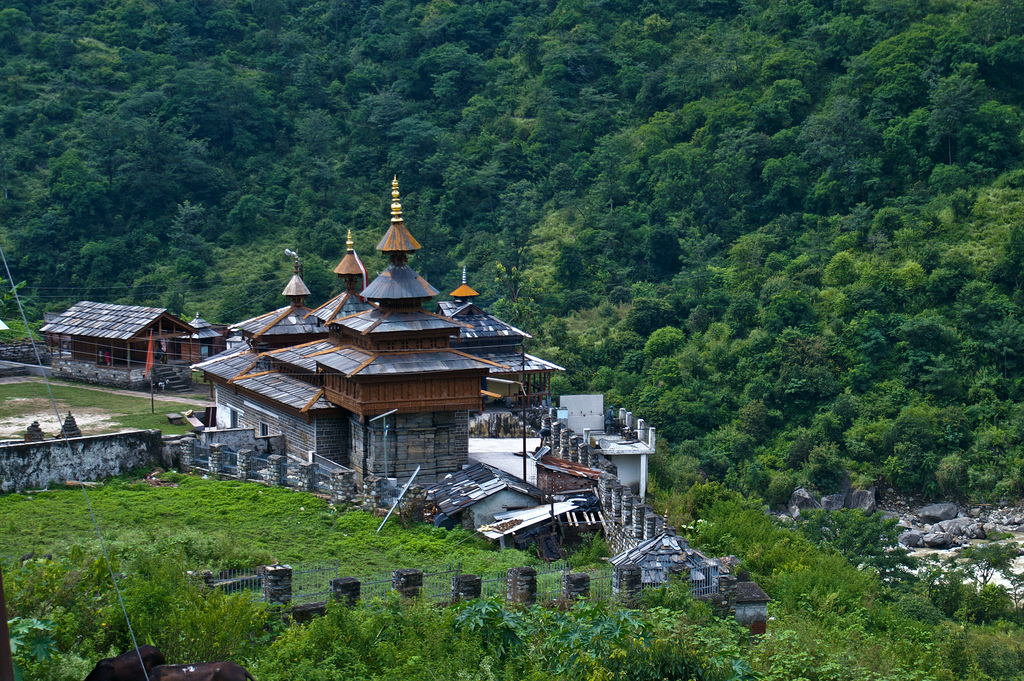Worship is the soul’s feasting Upon satisfaction Let’s visit Hanol…….Which has enormous Devotion

In the lap of nature, in Hanol located on the banks of the River Tons, the Mahasu Devta Temple is a precious heritage of art and culture. It is believed that the temple was built around the nineteenth century as per the architectural vision. I do not know what magic happened as soon as I reached the temple that all tediousness and fatigue caused by the treacherous long path vanished. Inducement of new energy began in the body and soul.
FORMS OF SHIVA
Mahasu Devta is the collective name of one of the four deities and in the local language; it is a disfigurement of the word “Mahasiva”.
So much so that it becomes clear that this temple is dedicated to Lord Shiva. These are the names of four Mahasu brothers Basti Mahasu, Pashashik Mahasu, Boothia Mahasu and Chalvada Mahasu, they all are considered as the form of Lord Shiva.
GOD OF JUSTICE
Mahasu Deity is the symbol of the God of justice and temple court for us. He is worshiped in Uttarkashi of Uttarakhand, Jausar-Bawar area, Ranya Pargana and Sirmaur, Solan, Shimla, Bisahar and Jubbal of Himachal Pradesh.
There are many temples of Mahasu Deities in these two territories. In these temples, different forms of Mahasu Deity are worshiped at different places. He also told me that on the left bank of Tons river in a temple in Hanol of Baver area, Buthia Mahasu and Basti Mahasoo is worshiped at the place called Mandrath. He also told me that on the left bank of Tons river in a temple in Hanol of Baver area, Buthia Mahasu and Basti Mahasoo is worshiped at the place called Mandrath. Pabasik Mahasu is worshipped in Bangan area situated in Thadiyar district of Uttarkashi, on the right bank of Tons river.
EXPLORING ONE’S OWN INCARNATION
The youngest brother Chalda Mahasu is the excursion fond god, who travels Uttarkashi for 12 years and Dehradun for next dozen years. Of which he is worshiped at different places for one year, of which the places of worship are Hajja, Bishoi, Kannada Kanasar, Makak, Udpalta, and Muna.
Being a stroller, my inclination was spontaneously moved towards Chalda Mahasu. Gods can also be strollers? I thought in my mind and then remembered Narad ji.
Lord, who would be the bigger stroller than you? You have been doing an excursion in the whole universe. Come on also on this earth and we also believe in the life of strollers. One day also visits earth and infuse faith on all strollers as well.
RURAL TOURISM
A little too much of village was also seen amidst these meetings. The manner in which the people of Hanol have organized concessional arrangements for the tourists to stay through their efforts within limited resources is much appreciable.
Indeed, this is a unique example of rural tourism.
SACRIFICING GOATS
While roaming in the morning, I saw several goats in the village and the nearby surrounding area. I thought it would be wild goats. When asked by the people, it was found that these are the goats for sacrifices.
In my known goats are killed while sacrificing. But here after observing the freedom goats have one might want to turn into a goat. In the temple flour and jiggery are offered as Prasad. To which people call offering Kadhaah in the local language. Along with this Kadhaah a present of Rs. 24 is also offered.
Many devotees also offer goats in the temple. But there are two forms of offering a goat, first, it is that the goat is shuddered with the accustomed water and offered to the deity. This process of shuddering with the accustomed water is called “Dhood” in the local language. After this Dhood it is believed that the god has accepted the goat and after that goat is left alive.
These goats can be seen roaming everywhere in the temple premises and Hanol village. These goats are called “Ghandua” and they are considered as living reservoirs of the god.
Now if the god wants to sell it then he can, but the goats will never be killed by any weapon.
In the second form, the goat is offered to god and sacrificed. But there is a different opinion about this. Some people say that sacrificial ritual has been abolished from the temple, and some people say that the sacrificial of the goat is given outside the premises by offering to the deity. If religious references are to be resorted, then Mahasu Devta is a form of Shiva and no sacrifices are given to Shiva anywhere.
But the truth is that animal sacrifices are offered here, which is clearly described in a mythology. “In the mythology, Kailu Veer bound the Kirvir monster while slaying Kirvir monster after the creation of the Mahasu Deity and Shedkudiya veer killed him, therefore, Mahasu Devta made the rule that the Shedkudiya Veer would be given wheat and goat meat to every solstice.”
Therefore, this sacrificial ritual is in accordance with the same rule, for the sake meat eater heroes of god, it’s an honor that has been running for years
After all, it reached to a point that till when the goat’s mother would celebrate the well being?
Written By:- Sanjaya Shepherd
